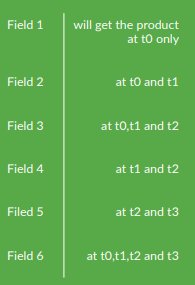While helping put together the last issue of Direct Driller magazine we were proofreading the article about Interagro’’s
Bridgeway Biosimulant product which you can read about further by scanning the code
The results claimed for this product in winter wheat last year were impressive. We felt they needed to be put to the test on the farm, so with a similar methodology to the BASF fungicide Adexar trial in 2016, we started a few tramlines trials – onfarm R&D to measure if it really can perform as well on our soils as in the range of results they found in 2018 which can be read about on the Interagro website. The plan here is to try it at various combinations and timings over several fields. It is claimed to work by helping crops through stress, so given the generally very dry conditions of spring 2019 experienced so far, that claim can be tested this season We have set up x 6 split fields – 4ha in each field The standard recommended rate of 2L /ha will be used at all applications

Yield will be mapped and calibrated against our weighbridge much like the Adexar trial we did which was deemed statistically significant by the ADAS Agrimetrics team at the time. The added resolution of data from the yieldmeter on the combine helped with the data analysis as well. We will also test protein levels as there are claims with regard to improved quality and take Brix readings to look at plant health throughout the season

On May 14th tissue samples the plots treated so far with t0 and T1 timings. There is no visual difference that to see either by eye or on any satellite NDVI images we have so far. It’s fair to say the plots have been through some stress over the very dry period we had. Samples were taken from treated and untreated areas of the fields and Brix levels compared (a number of randomly picked whole leaves (leaf 2) blended with a coffee grinder and then tested with an electronic meter) Brix test results are interesting and frankly quite surprising to the sceptic in me, it does seem to show consistent Brix increase in line with the qty applied.
The ‘Bank’ field is the lightest soil in this trial (sand over gravel) that would have been the most stressed by the dry conditions and that is where we can see by far the biggest increase in Brix level. The same tests will be repeated again here between t2 and t3 applications and then again after t3 hopefully. However, the weighbridge at harvest will however be the ultimate judge of this trial!

